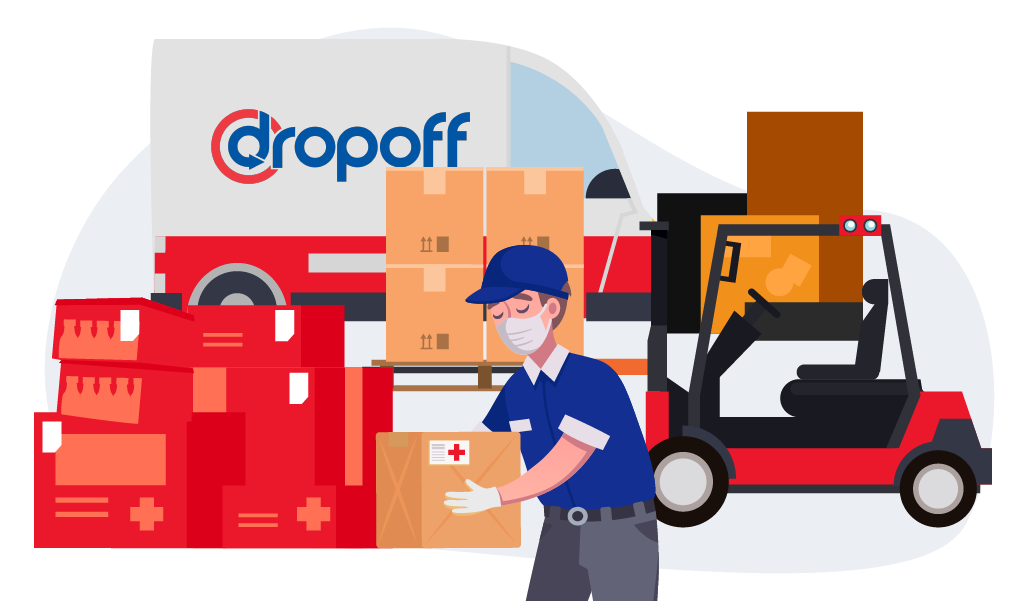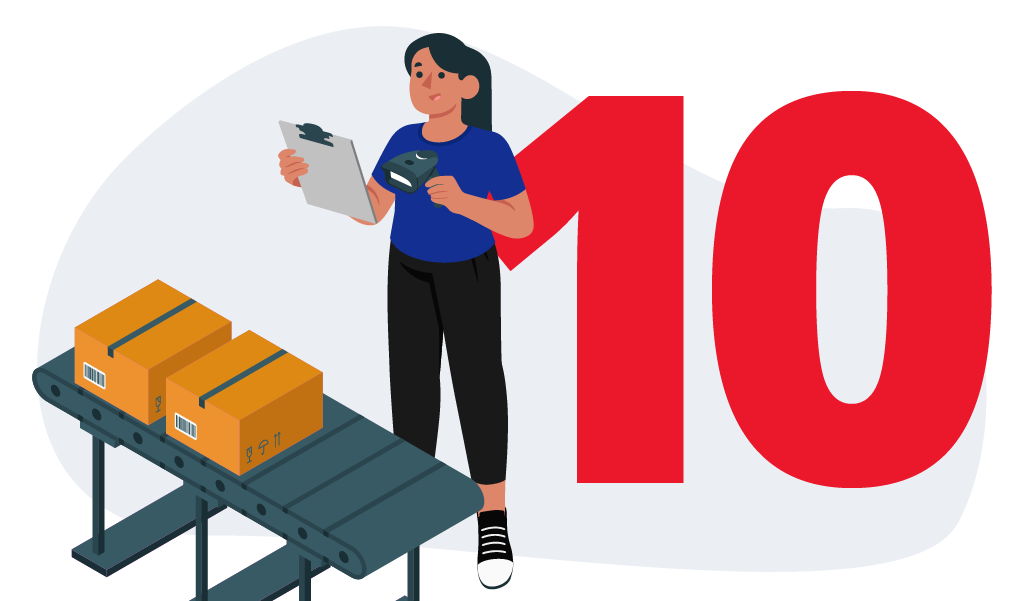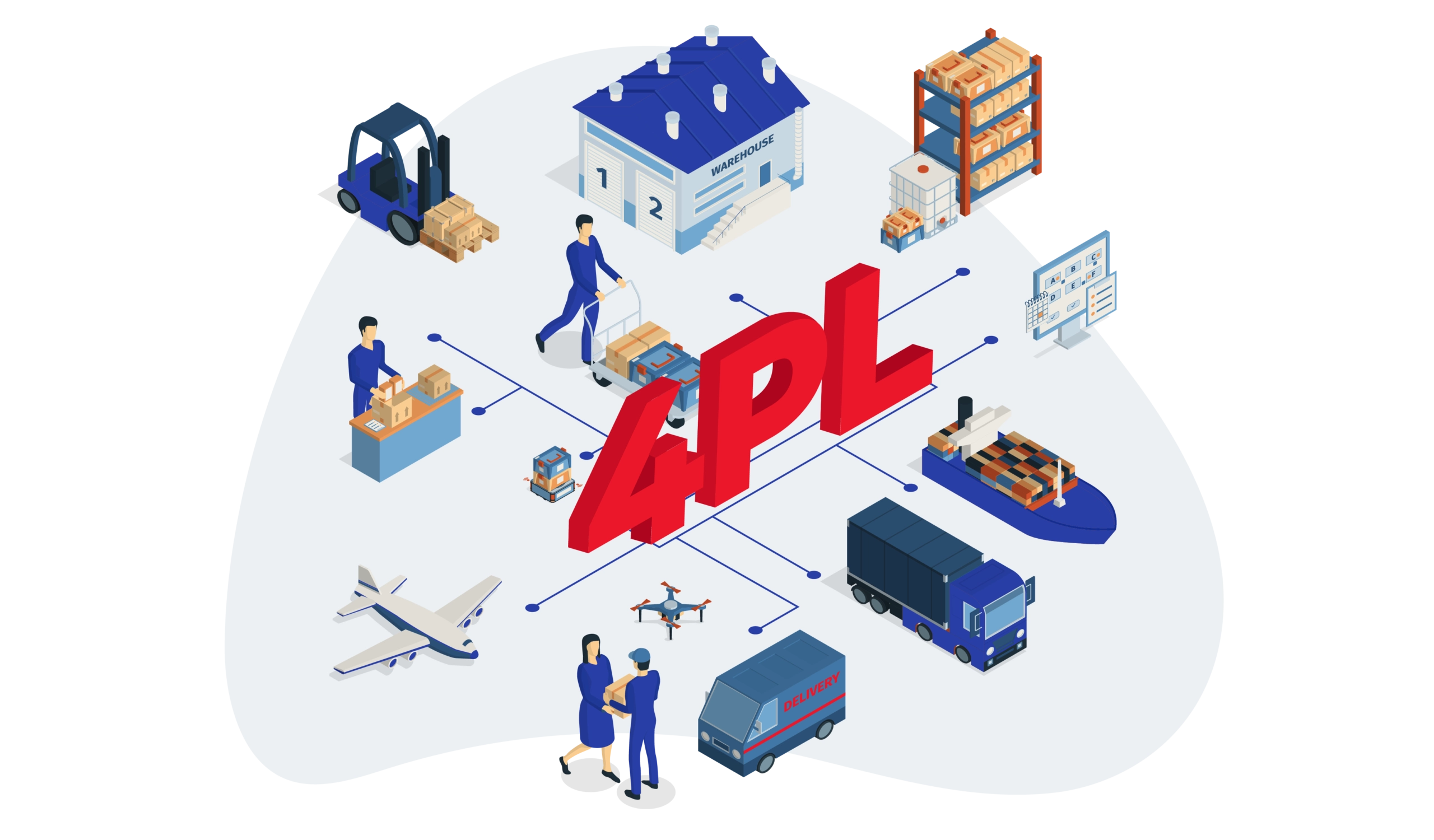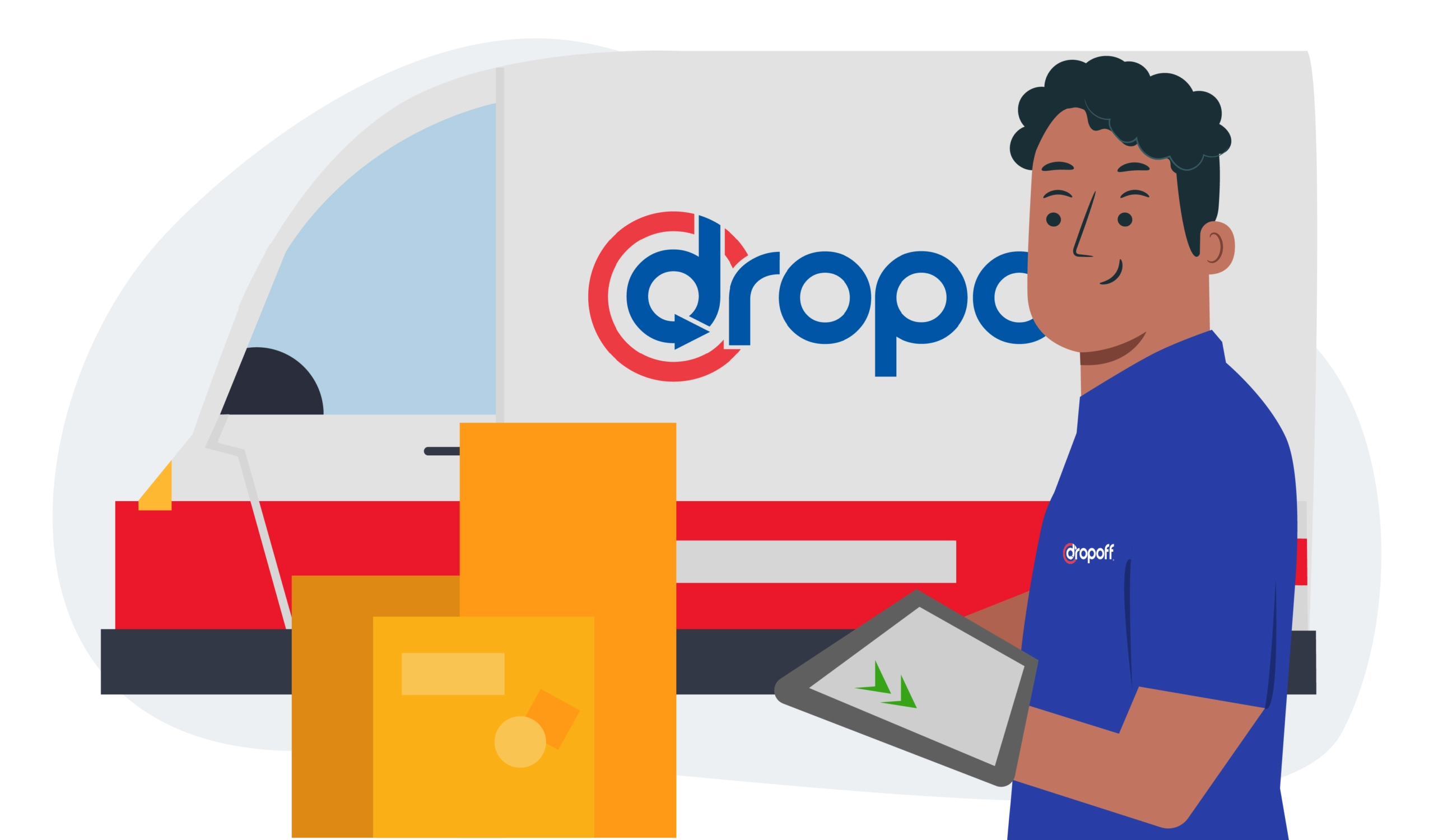Top 11 Logistics KPIs to Track in Same-Day Delivery
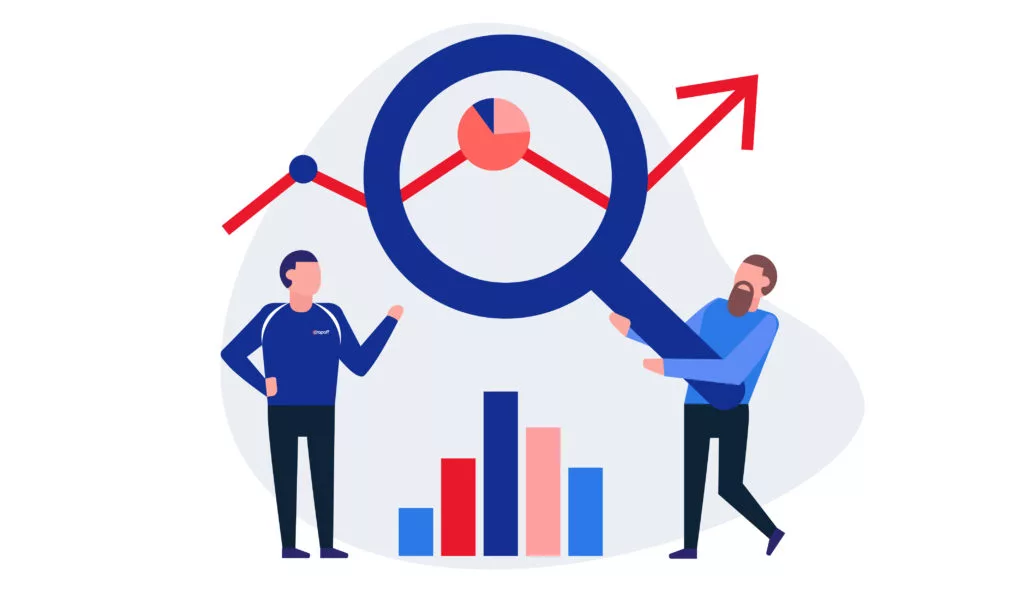
In order to maintain a successful same-day delivery operation, it’s important to track your key performance indicators (KPIs). By measuring the right metrics, you can improve your processes and provide better visibility across the organization.
In this blog post, we will discuss some of the most important KPIs to track in last-mile logistics and how they impact your business.
1. Average Delivery Time
One of the most important KPIs to track in last-mile logistics is the average delivery time. This metric helps you to understand how long it takes your drivers to complete a delivery, on average. By tracking this information, you can identify areas where your drivers may be falling behind and make changes accordingly.
A few things that can impact your average delivery time are the number of stops, traffic, and weather conditions. With this information, you should change your routes or schedule to help improve the average delivery time.
Same-day vs next-day delivery, what’s best for your business?
2. On-Time Delivery Rate
Another important metric to track is your on-time delivery rate. This tells you what percentage of your deliveries are made on time. To calculate this, you’ll need to track the number of late deliveries and compare it to the total number of deliveries.
If you find that your on-time delivery rate is low, there are a few things you can do to improve it.
First, take a look at your average delivery time and see if there are any areas where you need to make changes. Additionally, you can provide your drivers with better software and resources that help them complete their deliveries on time.
By tracking these important KPIs, you’ll be able to improve your same-day delivery service and provide your customers with the best possible experience.
3. Order Accuracy
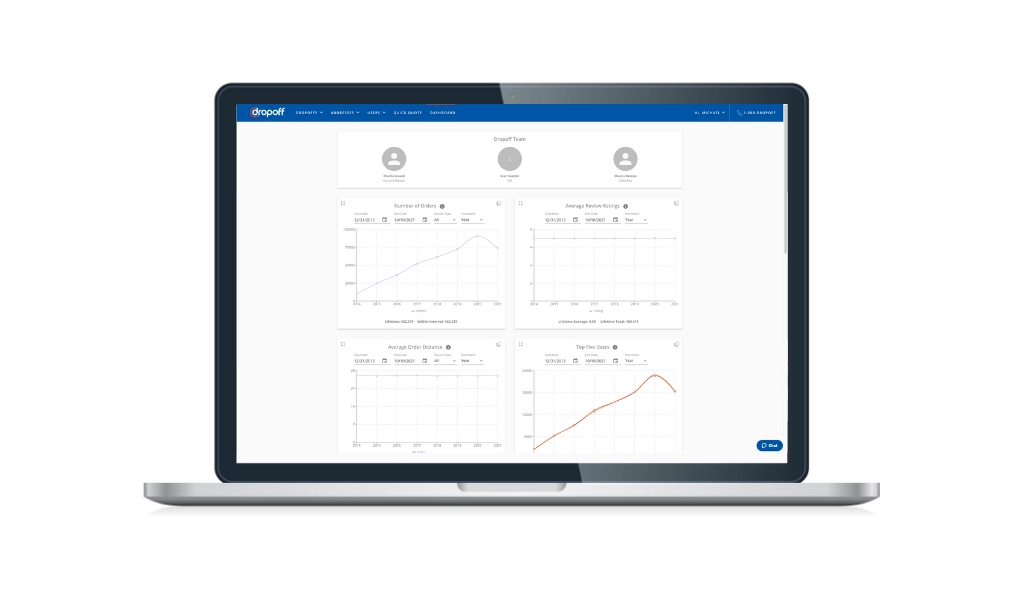
One of the most important things to track when running a delivery business is order accuracy. This metric tells you how often your drivers are able to deliver the correct order to the customer on the first attempt.
Order accuracy is important because it directly impacts customer satisfaction. If customers are not receiving the correct order, they will be less likely to use your service again in the future.
There are a few things that you can do to improve order accuracy, such as:
- Increase communication between dispatch and drivers. This can be done with a direct line or even just a quick chat tool like Slack.
- Make sure that drivers have all of the information they need before leaving for delivery. Use a unified dashboard to access all order and delivery details.
- Double-check orders before sending them out.
- Create a process for handling incorrect orders. While you can limit the number of incorrect orders, you likely won’t be able to get rid of them entirely. It’s important to have a plan in place for when it happens so you can keep the customer happy.
By tracking order accuracy, you can identify areas that need improvement and make changes to your processes. This will help to ensure that your customers are always happy with the service they receive.
4. Safety Ratings

Another important metric to track is safety ratings. This will tell you how often your drivers are involved in accidents or incidents.
Safety ratings are important because they impact both the cost of insurance and the reputation of your business. If you have a high number of accidents, it will be more expensive to insure your drivers and customers may be less likely to use your services or order your products.
There are a few things that you can do to improve safety ratings, such as:
- Providing training for new drivers. This can include both classroom and on-the-road training.
- Make sure that all drivers are up to date on the latest safety regulations.
- Regularly inspecting vehicles to ensure they are in good working condition.
- Encouraging safe driving habits by offering incentives for drivers with a clean record.
By tracking safety ratings, you can protect your drivers, products, and customers more reliably. This will help to ensure that your drivers are safe on the road and that your business is able to maintain a good reputation.
Guide: How to Choose a Third-Party Logistics Provider
5. Customer Complaints & Returns
Another metric that is important to track is customer complaints and returns. This will give you an idea of how often your customers are unhappy with the service they receive.
Customer complaints and returns are important because they impact customer satisfaction. If you have a high number of complaints or returns, it will be more difficult to keep your customers happy.
Here are a few things that you can do to reduce customer complaints and returns:
- Make sure that your drivers are polite and professional. A well-dressed courier with a smile goes a long way.
- Ensure that orders are delivered on time. Nothing leads to bad reviews faster than late delivery.
- Make sure that orders are accurate. Delivering to the wrong address, or delivering the wrong items is a one-way ticket to an unhappy customer.
- Providing customers with a way to easily contact you if they have a problem. Customer service 101, nobody wants to wait for hours on the phone or sit for days waiting on an email. Be proactive, provide customers with several ways to reach out, and respond as quickly as possible. We recommend within 24-hours even in the busiest times.
6. Vehicle Capacity Usage
Another metric that is important to track is vehicle capacity usage. This will give you an idea of how often your vehicles are at capacity and whether or not you have the right number of vehicles for your needs.
Vehicle capacity usage is important because it impacts both the cost of transportation and the efficiency of your operations. If you have a high number of vehicles that are not being used to capacity, it will be more expensive to operate your business.
However, if your entire fleet is reaching capacity often, it may be time to expand. Outsourcing your fleet can be the most cost-efficient way to grow your operation quickly.
There are a few things that you can do to improve vehicle capacity usage, such as:
- Create routes that maximize the number of stops per vehicle. This will help to ensure that each vehicle is making the most of its capacity.
- Using a smaller vehicle for orders that do not require a large amount of space. This will help to increase the number of vehicles that are available to complete all of the larger orders.
Tracking vehicle capacity usage will help you to optimize your transportation costs and improve the efficiency of your operations end-to-end.
7. Costs Per Delivery
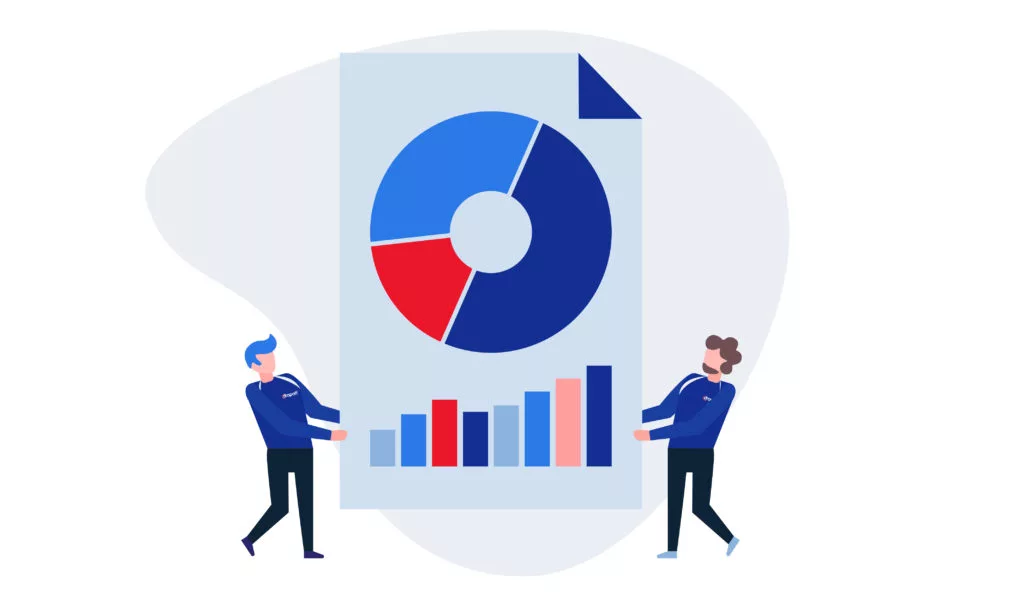
Another metric that is important is to track costs per delivery. This will give you an idea of how much it costs you to complete each delivery.
Costs per delivery are important because they impact your profitability. If the cost of completing a delivery is more than the revenue generated from the sale, you will not be able to sustain your business.
Costs can be broken up into three categories:
Fuel Costs
The cost of fuel is a major expense for any business, but it can be especially costly for last-mile logistics. The best way to reduce fuel costs is to optimize your routes. This will help you to eliminate unnecessary stops and cut down on the amount of time that your drivers are on the road.
Another way to reduce fuel costs is to use a fuel card. Fuel cards offer discounts at gas stations, which can save you money on each fill-up.
Driver Costs
Driver costs include things like wages, benefits, and training. The best way to reduce driver costs is to use independent contractors. Independent contractors are not employees, so you will not be responsible for their taxes or benefits.
10 Advantages of Outsourcing Courier Services
Another way to reduce driver costs is to use a pay-per-delivery model. With this model, drivers are only paid for the deliveries that they complete. This can help to reduce your labor costs, as you are only paying for the work that is being done. Rather than a traditional pay period, or hourly measurement that could vary.
Vehicle Costs
Vehicle costs include things like maintenance, repairs, and insurance. The best way to reduce vehicle costs is to use a fleet management company. Fleet management companies provide vehicles for a monthly fee, which can help to reduce your overall costs.
Another way to reduce vehicle costs is to purchase used vehicles. Used vehicles are less expensive than new vehicles, and they can be just as reliable.
When you are tracking costs per delivery, it is important to consider all of the expenses that are associated with each delivery. By reducing your costs, you will be able to increase your profits and sustain your business in the long term.
For more on this topic read our article on the most common logistical issues and how to overcome them.
8. Average Number of Stops
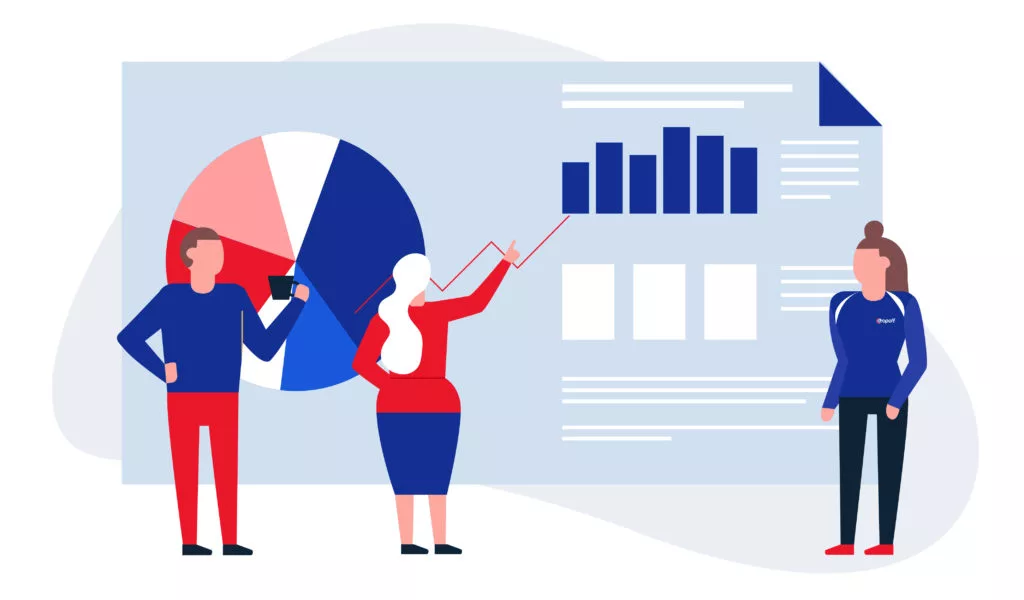
The average number of stops is another metric that is important to track. This will give you an idea of how many stops your drivers are making on each delivery.
The average number of stops is important because it impacts the efficiency of your logistics. If your drivers are making too many stops, it will take them longer to complete their deliveries. This can result in higher costs, lower profits, and lower customer satisfaction.
This may seem contrary to our section about vehicle capacity usage and that’s because it is. It’s all about finding the right balance in your routes, vehicle usage, drive time, and on-time rates.
At Dropoff, we are constantly reassessing our customers’ needs, vehicle usage, and courier performance so we can provide the best possible service for all parties.
There are a few things that you can do to reduce the number of stops your drivers are making:
- Use route optimization software to create efficient routes. This will help to eliminate unnecessary stops and cut down on the amount of time your drivers are on the road. Our team uses strategic routing so you don’t have to, see how it works.
- Batch deliveries together so that your drivers can make multiple deliveries at the same time. This will help to reduce the number of stops your drivers are making, and it will also save you time and money.
- Only deliver to locations that are within a certain radius. This will help to limit the number of stops your drivers are making, and it will also help you to stay within your delivery area.
Check out Dropoff locations.
9. Driver Idle Time
Driver idle time is the amount of time that your drivers are not actively working or the vehicle is idle. This can include things like waiting for a delivery pickup, waiting in traffic, or taking a break.
Idle time is important to track because it can impact the efficiency of your drivers and your fuel costs. If they are spending too much time idle, it will take them longer to complete their deliveries.
There are a few things that you can do to reduce your driver’s idle time:
- Use a GPS tracking system to track your drivers’ location and activity. This will help you to see where your bottlenecks are and will help you to create more efficient routes. This also allows you to provide your customers with live tracking for their orders.
- Communicate with your drivers so that they are aware of traffic conditions. This will help them to avoid areas with heavy traffic, and it will also help them to plan their breaks more efficiently.
- Encourage your drivers to take breaks in areas where they can do other tasks, like making a delivery or picking up an order. This will help to keep them on schedule and will reduce their total fuel expenses.
10. Monthly Vehicle Maintenance Costs

Monthly vehicle maintenance costs are important to track because they can have a big impact on your profits. If your vehicles are not well-maintained, it will cost you more money in repairs and downtime.
There are a few things that you can do to reduce your monthly vehicle maintenance costs:
- Perform regular maintenance on your vehicles. This includes oil changes, tire rotations, and brake repairs. Keeping up with the maintenance on your vehicles will help to extend their lifespan and reduce the need for major repairs.
- Use quality parts for repairs. This may cost you more money upfront, but it will save you money in the long run. Quality parts will last longer and will need to be replaced less often.
- Have a team of ASE-certified mechanics that can perform repairs quickly and efficiently.
11. Planned Mileage vs Actual Mileage
Planned mileage is the number of miles that you plan to drive in a day, week, or month. Actual mileage is the number of miles that you actually drive. It’s important to track your actual mileage because it can be an indicator that your routes can be improved.
If you’re driving more miles than you had planned, it will cost you more in fuel and vehicle maintenance.
There are a couple of things that you can do to reduce your actual mileage:
- Adjust your routes, by using tracking software you can quickly identify where traffic is at its worst, and at what point in the day. Don’t be afraid to try different routes or times of day to get your mileage as low and as accurate as possible.
- In addition, actual mileage can vary based on if drivers are following their route accurately, simple things like missed turns, or failed GPS systems can easily increase your mileage. Make sure your drivers know their routes inside and out so they can always stick to the plan.
If you need help with same-day delivery, talk to one of our Dropoff experts, we’ll help you come up with a custom solution for your business’s needs.

